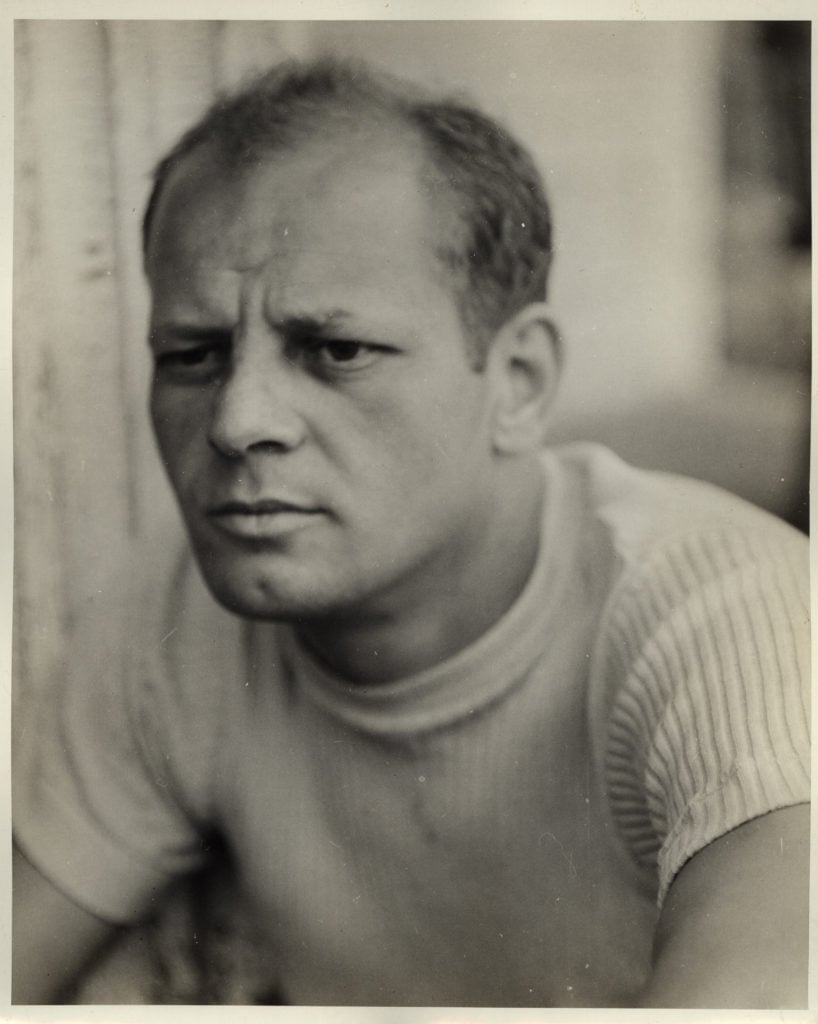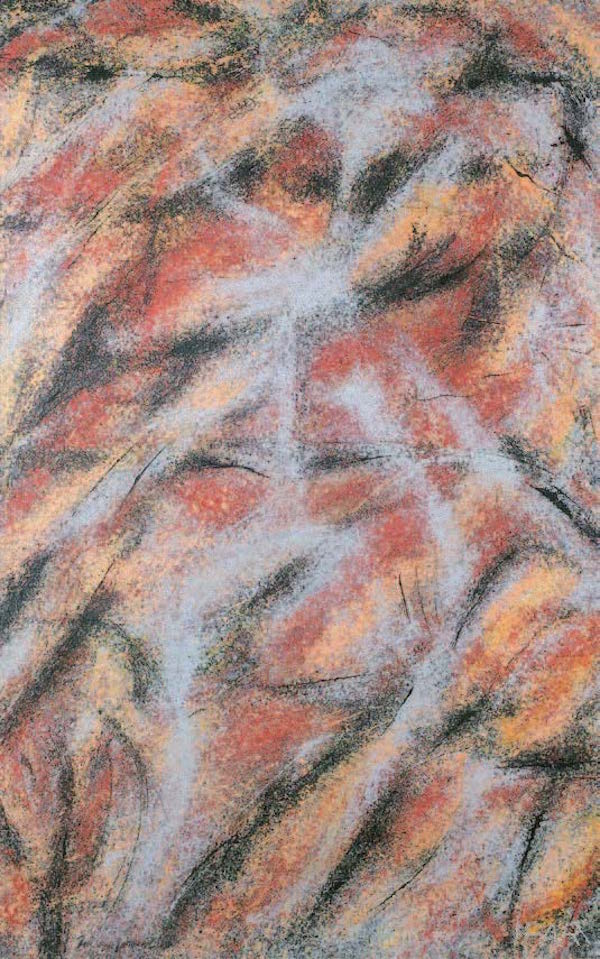Law & Politics
A Collector Says He Found a Jackson Pollock Painting Once Owned by Fidel Castro. Experts Say It’s a Scam
The International Foundation for Art Research says the fake could point to a larger con.

The International Foundation for Art Research says the fake could point to a larger con.

Eileen Kinsella

If you come across a colorful painting by world-renowned Abstract Expressionist painter Jackson Pollock with ties to the late Fidel Castro, think twice.
That’s the strong recommendation of the International Foundation for Art Research (IFAR), which has come across the same purported fake Pollock twice in the past five years. Each time, it is accompanied by an increasingly outlandish backstory. IFAR, which published its detailed findings in the most recent edition of its its journal, now believes the painting may be part of a larger ring of deliberately deceptive works.

Jackson Pollock in North Truro, MA, 1944. Photo by Bernard Schardt. Courtesy American Contemporary Art Gallery, Munich.
The Jackson Pollock Foundation stopped authenticating the artist’s work in 1995 after Pollock’s catalogue raisonné was completed. Since then, collectors have had the option of bringing their work to IFAR’s authentication service, which has flagged high-profile fakes in the past, including those associated with the now-defunct Knoedler gallery.
The latest problematic painting first came onto IFAR’s radar in 2013, when an unidentified collector from Florida submitted a large vertical painting signed “Jackson Pollock” to the organization for examination, according to art research director Lisa Duffy-Zeballos, who wrote the IFAR journal story.
According to the collector, the work once belonged to an unknown individual in Cuba. Pollock allegedly sent the painting there himself in the 1950s so it could be sold to raise money to support the Cuban Revolution. But the collector in Cuba kept the painting instead of selling it. Later, it was supposedly loaned to the seminal Salón de Mayo exhibition in Havana in 1967, according to the provenance.
The painting was accompanied by a slew of “obviously fake” letters in “poor English,” according to IFAR, that had supposedly been written by Pollock. In one, the artist chastised the collector for keeping the painting for himself instead of selling it.
Further “evidence” of the provenance was offered up in the form of photographs: one depicting a young Castro and a member of his government, Mario Martinez, with the painting; and another showing the canvas in Pollock’s studio. (It was not clear how the painting supposedly made its way from Cuba to this Floridian collector.)

IFAR #13.09. Submitted to IFAR for verification as a Pollock. Image courtesy of IFAR.
IFAR quickly debunked the Salon de Mayo claim; no Pollock works were shown in that exhibition. In fact, the only American artist included in the 1967 show was Alexander Calder.
Next, IFAR unearthed the source for the accompanying photographs—which turned out to have been doctored. One was digitally altered from a 1958 photograph showing another Abstract Expressionist, Franz Kline, with Venetian art dealer Carlo Cardazzo in front of a large painting by the artist. The figures were swapped out for Castro and Martinez, and the Kline was digitally replaced by the “Pollock.”
The second photo, purportedly showing Pollock in his studio with the painting in question behind him, is believed to have been digitally altered from a 1954 photo of Kline that was taken for LIFE magazine. IFAR also determined that the style of paint application and use of gold in the so-called “Cuban Pollock” “have no relation to authentic works” by the artist.
IFAR assumed this was the end of the story. But this past fall, the organization was once again contacted by an art dealer claiming to have a Pollock painting titled Number 5, Untitled White (Spring and Gold). And like a rumor that becomes more and more outlandish as it makes its way across a social circle, the story that accompanied the painting had become even more outlandish.
This time, the canvas—the exact same one IFAR had examined in 2013—was said to have belonged to “none other than Fidel Castro.” It was accompanied by new fake documents and photographs, including one of Castro standing in front of the work. “In the new provenance, Pollock allegedly presented the painting as a gift to Castro himself during the latter’s visit to the United States in 1955,” according to the IFAR story.
Photos of the back side of the canvas revealed an even bigger surprise: the addition of an inscription, signature, and the initials “L x K,” supposedly those of Lee Krasner, along with the initials “jP” [sic].
The new signature was oddly familiar to IFAR experts. “We had only recently rejected another purported Pollock bearing an identical inscription,” according to the story. When that work was submitted to IFAR in 2017, researchers had no reason to suspect a connection to the so-called Cuban painting. It had been sent from Spain, having allegedly been acquired by a member of the Swedish royal family from Krasner via French art dealer and critic Michel Tapié.
In hindsight, of course, the signs were there, IFAR says. Both works were submitted with an extensive dossier, including letters signed by Lee Krasner and notable for their poor English.
Stylistically, the two paintings are vastly different, IFAR notes. The disparity indicates that the paintings were not intended as a pair or even made by the same hand. However, someone who had access to both works copied near-identical inscriptions onto the backs to make it seem as if they were part of a series from 1950.
IFAR believes other paintings may be involved in this scam. The story ends with this admonishment: “You have been warned!”
“This article shows the type of careful research and examination that IFAR brings to bear on artworks submitted to us, and our sense of public purpose in making the research more broadly known when we suspect a scam,” IFAR executive director Sharon Flescher told artnet News.